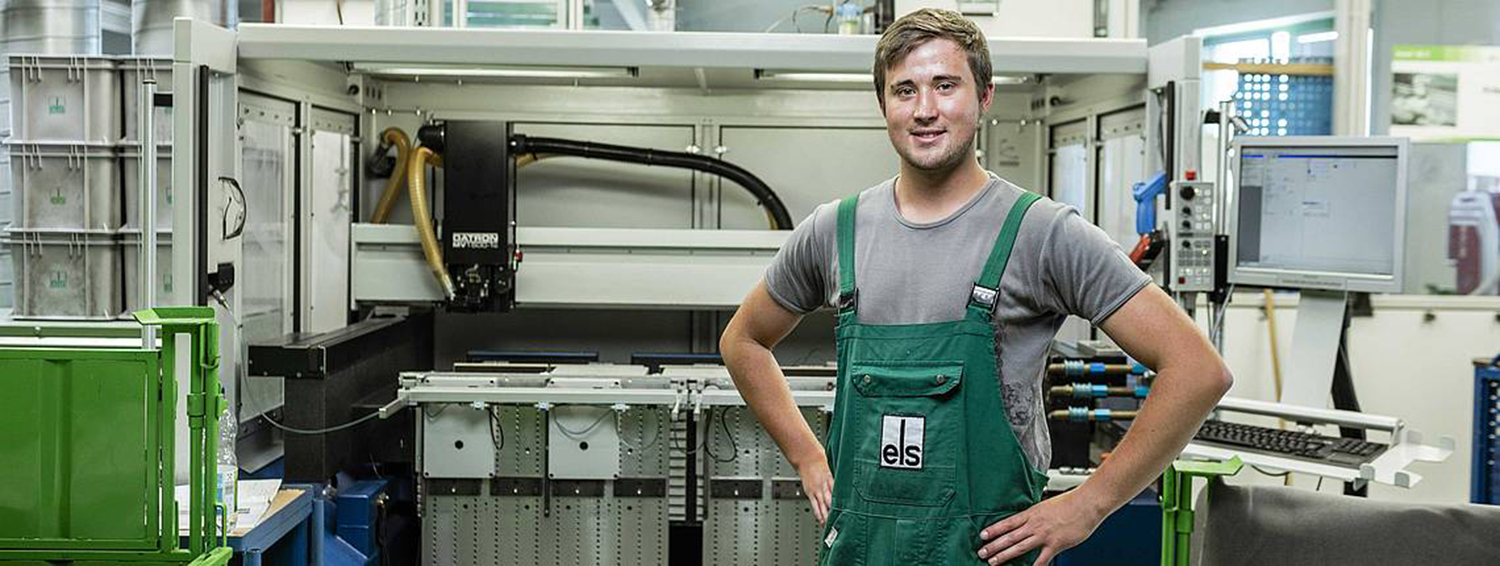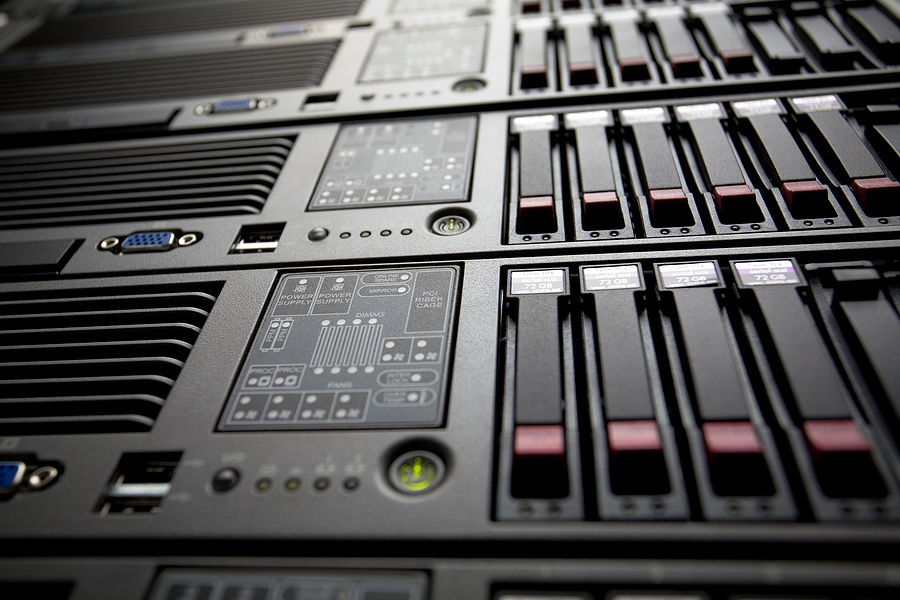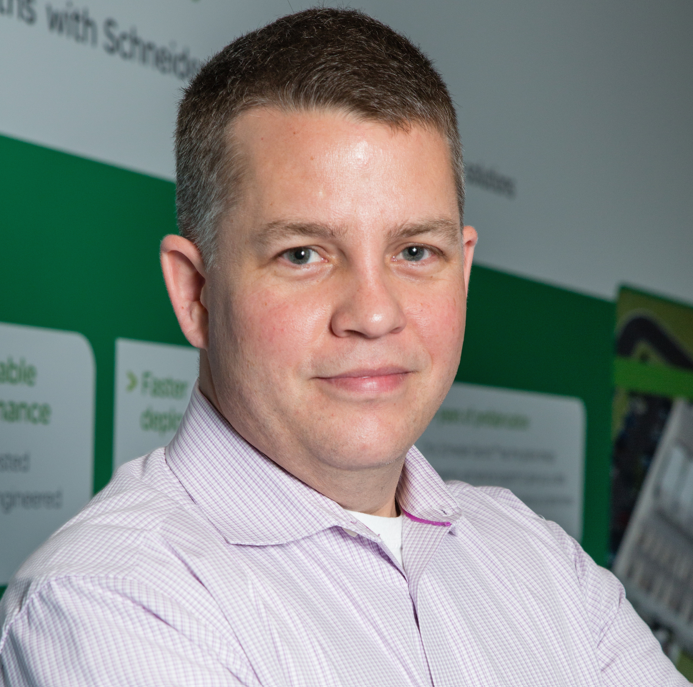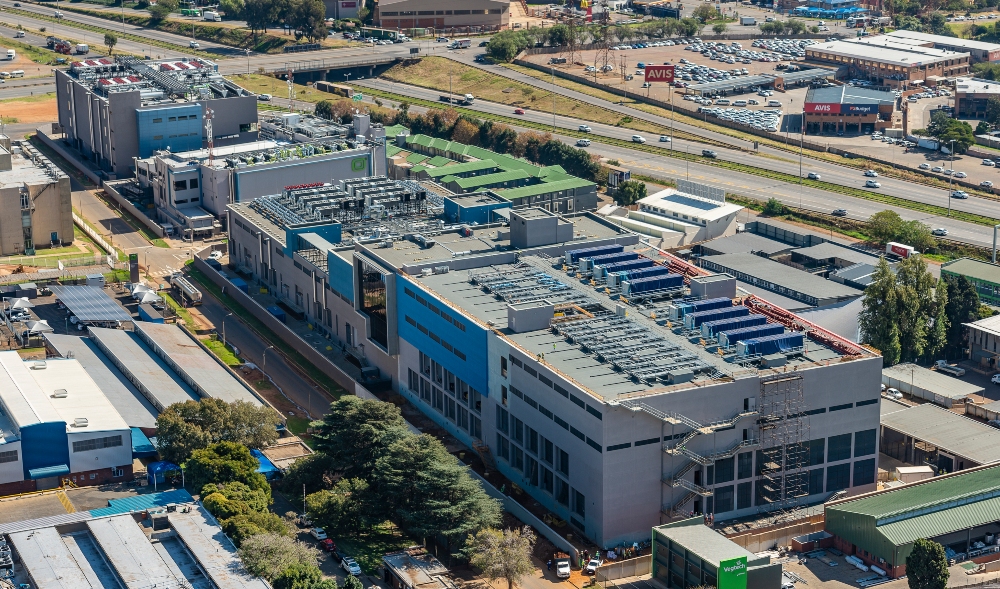Infrastructure Management
Data Centres
Infrastructure Management
Keysight extends digital 800G test portfolio to improve power efficiency in data centres
Keysight Technologies has expanded the company's portfolio of high-speed digital 800G test solutions to enable the optical transceiver ecosystem to improve the power efficiency of components and modules used in data centre equipment.
Hyperscale data centres are
adopting 800G, the latest data centre connectivity technology, to address a
rise in the use of cloud-native, 5G, artificial intelligence (AI) and internet
of things (IoT), as well as data-hungry applications such as video
conferencing, streaming and digital entertainment. The latest addition to
Keysight's existing portfolio of 800G test solutions are new design and
validation solutions that support multimode interfaces, which are critical for
an energy efficient data centre infrastructure. The 800G multimode test
solutions uniquely support high-speed data interconnect speeds of up to 100 gigabit per second (Gbps).
"An ever-increasing growth in data traffic, compounded with data centres’ need to reduce their energy footprint, has prompted Keysight to launch the new 800G multimode test solutions," says Dr. Joachim Peerlings, vice president of Network and Data Centre solutions at Keysight Technologies. "These new solutions will help reduce power consumption in data centre equipment. Energy conservation and efficiency in data centres has a significant positive impact on the health of the planet."
In December 2020, Keysight launched industry-first
800G test solutions to help speed development of next
generation data centre technologies. The 800G multimode test solutions enable
users to verify the performance of a wide range of optical transceiver modules
and components, including vertical-cavity surface-emitting lasers (VCSELs),
photodiodes, modulator drivers, transimpedance amplifiers (TIAs) and physical
layer (PHY) chips.
The extended portfolio
supports 400G and 800G design validation, in accordance with standards defined
by the Institute of Electrical and Electronics Engineers (IEEE), across the
entire product lifecycle, from early research and development to manufacturing.
Industry-leading test capabilities from Keysight include:
Multimode component characterisation using Keysight's N4373E lightwave component analyserConformance and interoperability validation using Keysight's N1077B 64Gbaud multimode optical and electrical clock recovery solutionsTransceiver module performance evaluation using Keysight's A400GE-QDD and G800GE layer 1 multiport test solutions.
Beatrice - 7 February 2022
Data Centres
Infrastructure Management
Network Storage
News
Telehouse and Zayo team up to future-proof network infrastructure
Telehouse has announced a collaboration with Zayo to deliver a high-capacity and agile network across Europe.
Driven by the growing demand for fast
connectivity and hybrid IT infrastructure, the collaboration will connect
Telehouse’s network of European data centres on Zayo’s high-performance fibre
network to create a unique connected digital ecosystem and enable customers to
benefit from fast, seamless access to multiple cloud providers.
Zayo will deliver a robust cross-connect
infrastructure across Telehouse’s iconic London Docklands campus, providing
enhanced and resilient connectivity to customers globally. The company will
also help Telehouse connect Telehouse South – its newest data centre set to
open in February 2022 - into the Docklands campus, enabling customers to
benefit from the same low latency and highly-connected ecosystem of more than
800 connectivity partners for which the campus is known.
As a long-time partner of Telehouse, Zayo already has core network nodes in place within seven of Telehouse’s ten European sites, with the remainder to be added in 2022. Through the new partnership agreement, Telehouse customers can benefit from up to 100Gbps bandwidth across European sites, while Zayo customers can tap into the Telehouse ecosystem to benefit from stronger connections and unrivalled access to multiple cloud and connectivity providers.
“Our goal at Telehouse is not to sell real
estate but to build connected ecosystems and increase connectivity for
customers looking to connect across sites or to the cloud,” says Nick Layzell,
Client Services Director at Telehouse Europe. “By combining our secure,
connected ecosystem with Zayo’s innovative fibre solutions, we are not only
providing customers with a trusted environment to host their infrastructure,
but a reliable, scalable and high-capacity network to meet evolving business
demands.”
With this partnership, Zayo is expanding its
network to cater to growing connectivity demands driven by the shift to hybrid
work. By establishing core network nodes and placing equipment within
Telehouse’s strategically located data centres, Zayo will strengthen its
high-speed global fibre network, while also enhancing its mission-critical
fibre bandwidth capability within the Telehouse data centre facilities.
“Telehouse was an obvious choice for us due
to its established reputation for building highly-secure and connected data
centre ecosystems and close proximity to Europe’s growing financial ecosystem,”
says Ed Wheeler, Data Centre Partner Manager at Europe Zayo. “Together we can
meet increased customer demand for connectivity to support hybrid working
and facilitate crucial connections for Zayo clients, including large global
banks and hyperscalers.”
Beatrice - 2 February 2022
Data Centres
Infrastructure Management
Projects
Secure I.T. Environments completes data centre projects for Hospital
Secure I.T. Environments has announced the completion of data centre infrastructure upgrades at two hospitals in South West England. Both projects entailed updating 20-year old data centres, one with new air conditioning systems projected to save £13,684 in annual running costs.
One of the upgrades was to a hospital responsible for many of the trust’s acute services based there including an emergency department and Minor Injuries Unit. The data centre upgrade was taking place on a live data centre, so great care was taken to minimise the impact on hospital services. The end of life air conditioning system was replaced with 4 x GEA Multi-Denco energy efficient downflow units in an N+1 configuration. Works took place in a phased approach to ensure the data centre could continue to operate at full capacity. SITE also completed a large power upgrade, which had to be carefully managed as several critical care supplies had to be briefly taken offline as part of the planned switch over.
At the second hospital site, the 20-year old UPS and environmental systems were replaced with a 50kVA/kW modular energy efficient UPS solution, which includes air conditioning to prolong the lifespan of the batteries. All works were completed without any shutdown and allowed for a seamless transition between the old and new UPS systems. The new Jacarta DCIM EMS system ensures there is now EMS continuity across the trust’s three data centre sites with monitoring for UPS, AC fail, water leak detection, fire panels, humidity and temperature. This data is fed into a centralised building monitoring system that the IT team can monitor remotely. No down time was required for the upgrade.
Chris Wellfair, projects director at Secure I.T. Environments, says “Healthcare settings are some of the most challenging environments that we work in. We have built up decades of experience within the NHS sector, which enables us to ensure a minimum impact on patients and staff, and reduce the risks of unplanned downtime.”
Beatrice - 11 January 2022
Data Centres
Infrastructure Management
IT
Networking
Telehouse unveils predictions for IT infrastructure in 2022
Telehouse has revealed five top trends it expects to impact the world of IT infrastructure during 2022.
Edge data centres will start to spring
up nationwide
Recent Telehouse research showed that already more than two-thirds (68%) of UK IT decision-makers have implemented a strategy for edge. As we move into 2022, and 5G is deployed more widely, we will see even greater demand for edge data centres and an increase in acquisitions, mergers and the launch of new data centres across the UK. Edge computing, delivered from this fast-emerging network will provide the capacity to support smart cities, and a latency of less than one millisecond.
Colocation will more than hold its own
against hyperscale
Despite challenges from hyperscalers, the colocation market will continue to thrive in 2022. Telehouse research shows that 99% of UK enterprise IT decision-makers are using colocation, with 40% of enterprise IT infrastructure outsourced. This is set to rise to 46% in five years’ time, with significant growth set to take place in 2022 as companies lay the foundations for edge computing and shift IT infrastructure from on-premise to colocation in response to remote and hybrid working models.
Uptake will increase particularly in sectors
such as financial services, who are under pressure to
transform and migrate away from legacy infrastructure rapidly, enabling them to
benefit from fast, secure and direct connections to cloud service providers
while maintaining strong security.
Connections will be more
important than location
Rising data volumes and
increasing demands for advanced technologies like artificial Intelligence (AI)
and machine learning (ML) will force businesses to find ways to ingest and
process data quicker, and to do in a scalable and flexible cloud environment.
Greater focus will be placed on the route data takes and the number of
connections it has, rather than its geographical home. Building connected
ecosystems and low-latency connectivity with network and
connectivity partners will be critical to success.
Growing data volumes will overwhelm
businesses and lead to IT burnout
A third of enterprises already say growing data volumes is a serious problem, according to Telehouse’s Race to the Connected Future and this will rise further in 2022 as data demands increase. Businesses will continue to focus on unlocking and analysing data to increase agility, inform strategy, launch new services quickly and inform decision making for digital transformation., but increasing pressure on IT teams, many of whom are not data literate, will lead to rising levels of burnout across the sector.
Growing data volumes will also continue to
drive the adoption of edge to deliver a more efficient way of moving and processing large volumes
of data in real time.
Sustainability will become
non-negotiable
Sustainable IT Infrastructure will become a mandatory requirement for most businesses in 2022, driven by pressure from customers, partners and increasing regulation. Reducing environmental footprint is already a top five challenge and will be the second biggest challenge by 2030 according to Telehouse research. As a result, monitoring of environmental footprint of IT operations will increase and steps taken to reduce carbon impact in 2022, particularly when it comes to infrastructure strategy.
Edge computing and colocation are already
considered the most sustainable infrastructure models, and as more enterprises
adopt hybrid and multi-cloud, adoption of colocation will rise as companies
seek to offload sustainability responsibilities and reduce carbon impact of
cloud connectivity by connecting to multiple cloud services through a single,
dedicated private connection from a data centre.
Mark Pestridge, Senior Director Customer Experience at Telehouse Europe says: “2021 was another significant year for IT Infrastructure, driven largely by response to the pandemic. As things settle in 2022, the focus will move away from building infrastructure foundations, to tackling issues such as data growth and sustainability, which in turn will further drive the need for colocation. Having the right partner, to help future-proof and remove risk from IT infrastructure will be critical to success.”
Beatrice - 6 January 2022
Infrastructure Management
How enclosure suppliers are adding value and engineered excellence
The most significant shift in the industrial enclosure market over recent years has been the demand for increased customisation and fulfilment. From CNC machining to pre-assembled electrical terminals, additional services save the customer time and money. In some cases, turnkey solutions are provided and this bespoke approach has also had a knock-on effect for enclosure technology, which is becoming ever more specific to task.
Chris Lloyd, Managing Director, Spelsberg UK, explains the trend in the enclosure market and where it’s heading.
The most significant change for industrial enclosure manufacturers over the past 10 years has been the requirement to provide not just the enclosure itself, but a customised, partially complete or even a finished unit. This means that customers, typically OEMs but also end-users, increasingly request components to be assembled by the enclosure manufacturer, providing a product that’s ready – or almost ready - for installation.
Driving this trend is the reduction in the time and cost of labour for the customer. Shifting this aspect of manufacturing production to the enclosure manufacturer also speeds up project completion, meaning faster time to market.
Enclosure assembly and customisation
In addition to providing the actual enclosure, this means that manufacturers are typically requested to fit components such as electrical terminals and cable glands, through to membrane keypads and overlays. Part of the pre-assembly process can also include customisation. Using CNC machining, this can mean drilling specific sizes and locations of holes for optimal cable routing, through to countersinking and tapping to increase mounting flexibility.
Today, the enclosure manufacturer has the skills and technology that the OEM or end user doesn’t have available in-house, in order to provide customised and assembled units. This increases the accountability demanded from the enclosure manufacturer - instead of sharing it with third-party machinists or fulfilment houses - which improves the speed and reliability of project completion.
The shift to complete finished products
The extent of progression in the one-stop-shop demands placed on current industrial enclosure manufacturers also includes complete finished products that are ready to install. For example, as a result of the rise in electric-powered vehicles, including cars as well as bicycles and scooters, manufacturers like Spelsberg have been tasked to provide OEMs and local and municipal authorities with complete charging units.
Spelsberg’s e-bike charging station, the BCS, is a complete battery charging unit, ready for public installation and use by an e-bike rider. The BCS includes not only a durable IP54/IK08 industrial enclosure, but also the electrical charging sockets, ready for connection direct to a 230/400 V power grid. Providing completed products like an electric battery charging station means close partnership with electronic component specialists, such as PCB designers and manufacturers, as well as wider technology specialists such as mobile app developers. Each BCS unit can be located by an e-bike rider thanks to the connection of a smartphone app.
The demand on enclosure manufacturers for complete products is increasingly seeing a need for wider skills recruitment as well as additional partnerships with new types of suppliers. Manufacturers like Spelsberg are not only investing more in terms of electronic component development and manufacture, but system design is increasingly coming to the fore. Where previously a customer may have presented their design for the enclosure manufacturer to produce, increasingly the customer gives only their challenge or desired outcome, tasking the manufacturer with the design and development of the solution.
Rapid delivery of turn-key projects
Particularly for end users such as large utilities suppliers, their requirements are increasingly for turn-key solutions. The enclosure of switchgear for solar farms is a tested example, and the renewable energy sector is also creating further demand for complete solutions for wind and tidal power. Telecommunications networks also have similar requirements. Providing major utilities with ready-to-install, completed units, not only gives them benefits in terms of speed and cost reduction, it also improves the efficiency of their procurement process by reducing their supplier count.
While customers increasingly want a near-ready or ready product, this hasn’t reduced the demand on timescale. Producing a customised prototype as a customer sample is often needed on a same-day basis. When it comes to providing the manufactured batch, the operation might typically be required within one to two weeks. This not only means fast production, including customised aspects such as CNC machining, but also involves carrying a flexible stock of items such as membrane keypads, in addition to the actual enclosures.
Specialised enclosure technology
In terms of the industrial boxes themselves, as customer requests become increasingly specific, so do the enclosures. To suit the varied nature of demanding applications, the range of standard enclosures has had to grow to accommodate products such as enclosures for concrete installation for the construction industry, through to fire-proof boxes for security devices such as alarms and sprinkler systems. More specialised still, applications for the military can require non-reflective, self-extinguishing, radar-proof, ‘stealth’ enclosures.
While there will remain a need for providing enclosures alone, for example to electrical installers, from the perspective of OEMs and end-users, the electrical enclosure industry will continue to move towards partially assembled and complete solutions for specialised applications. Not only is this approach saving the customer cost and time, ultimately it’s helping to create better completed projects.
Beatrice - 26 October 2021
Colocation
Data Centres
Infrastructure Management
DAMAC and Dataplex partner to develop data centre facilities in Europe
DAMAC Group has entered a partnership with Dataplex Group. The partnership will focus on brownfield projects involving retrofitting existing structures and larger greenfield projects, with specific focus on hyperscale and wholesale colocation customers.
DAMAC Group has also invested in Dataplex, which will result in a
shareholding of up to 45% of the company over time. Dataplex’s primary
shareholders DAMAC Group and Chirisa have acquired a land parcel in Abbotstown
for a greenfield 70 MW+ data centre and industrial campus development in
Dublin, Ireland.
The DAMAC Group of companies is the private investment arm of Hussain Sajwani, the Dubai-based billionaire known for his successful global property development company, DAMAC Properties. The group has a diverse portfolio across various sectors including real estate, capital markets, fashion, and more. Earlier this year, DAMAC Group made its foray into the data centre industry by launching Edgnex, a global digital infrastructure company headquartered in Dubai.
“DAMAC Group, through its global digital infrastructure company Edgnex, is developing data centre facilities to support the growth of digital economies across the globe. Our work with Dataplex enables us to serve exponential demand coming from local markets, driven by rapid digital transformation, booming digital economies, and growing internet users,” says Hussain Sajwani.
Edgnex, a global digital infrastructure provider, identifies and
invests in the next digital hubs and aims to disrupt the local data centre
market. Over the coming months, Edgnex will be announcing acquisitions,
building projects and partnerships focused on developing local data centre
facilities in emerging or underserved markets globally. Its mission is to bring
new speed and agility to the data centre market so that more local and regional
economies, enterprises and end users can benefit from
digital infrastructure.
“We have a track record of recognising opportunities, making significant investments and capturing a first mover advantage. We are driven by market dynamics, not just by who needs capacity now. Where we go, others follow,” Sajwani adds.
DAMAC Group’s footprint extends across the Middle East with projects in the UAE, Saudi Arabia, Qatar, Jordan, Lebanon and Iraq. Its success has allowed the company to expand global presence to places such as Canada, the Maldives, Italy and the UK.
“DAMAC Group has a unique vision for the data centre market, and we look forward to helping it to bring its disruptive model to more cities around the world. Together with DAMAC Group, we can deliver digital infrastructure in underserved markets and support the growth of local digital economies,” comments Eddie Kilbane, co-founder and CEO of Dataplex Group. “Our partnership will enable our organisations to grow together, and it will be great to work with the team at DAMAC Group.”
Beatrice - 20 October 2021
Data Centres
Infrastructure Management
Tips on how to commission a data centre for a successful operation
Today, data centres underpin many of the mission and business-critical digital services that we take for granted. Such services vary greatly from streaming platforms to healthcare and bio-medical research, while also supporting key segments, such as enterprise, finance and retail. No matter their intended purpose, today’s data centres must perform with efficiency and resiliency, and while much of this responsibility falls on the operational staff once a facility is up and running, the burden can be eased if, from the outset, the data centre is commissioned for optimum performance.
Deployment strategy undoubtedly remains
crucial, and a primary way to ensure successful operations is to conduct a
commissioning exercise before a data centre is built. This process, which is
often carried out by an external commissioning agent, reviews the physical
design of a new facility and tests it as a holistic system. When done properly,
it will anticipate potential difficulties, verify that the design meets the
expected end-user objectives or industry standards, and will ensure that the
build takes place according to the desired schedule and budget.
Communication
and expertise are essential
For a commissioning exercise to be
successful, however, it must avoid a number of pitfalls. This includes bringing
the agent into the process at too late of a stage to be effective. Here, it’s
important that the agent should be engaged weeks or months before the data
centre is constructed, in order to overcome complications such as incomplete
testing and poor communications between stakeholders.
It’s also important to align testing
procedures with the specific technologies deployed, as all too frequently,
procedures for testing legacy infrastructure may not be appropriate for use
with newer more advanced equipment. By ensuring they utilise updated testing
procedures consistent with current technology, agents can avoid confusion among
personnel and mitigate malfunction or downtime once the facility is up and
running.
As with any successful project management
exercise, there must also be a clear identification and allocation of roles
between the various stakeholders. Greater coordination and clear communication
between all groups will prevent duplication, confusion, and delays.
Validation of the project plan is also
important, especially in terms of work schedules and delivery dates, so that
all partners are clear on what is expected of them and by when. Preparation remains
critical, and greater validation can help to anticipate problems caused by
differences of interpretation between siloed teams, or inconsistencies in timing.
Driving
efficiency
With cooling a fundamental component of data
centre design and operation, and with greater needs to maximise energy efficiency
and keep operating expenses (opEx) or costs low, it is essential that the agent
carry out a detailed analysis of the potential heat loads once a data centre
environment is deployed and live.
Fortunately, many data centre
infrastructure management (DCIM) tools and other software systems can quickly analyse
a facility based on its design and hardware systems, and deliver accurate
simulations that will ensure the facility is performing both adequately and
efficiently.
Avoiding
human error
The task of a commissioner can often be
complex, as they must also identify any weak links in a design, which are
likely to surface in real-world conditions. However, this more stringent
approach will avoid having to diagnose problems at a later stage and here a simple
checklist of anticipated inputs and outputs for critical components can help to
quickly rectify any issues.
More often than not, the people responsible
for designing a data centre and anticipating any potential events are not usually
the same professionals responsible for its operation. Should an unexpected event
such as equipment failure or outage be experienced, it’s crucial that a comprehensive
list of emergency procedures, alongside other documentation, is kept up-to-date,
as the technologies within a data centre may change over time.
Finally, every effort must be made to
reduce human error during the commissioning process. It may be inevitable that
as demands increase and deadlines loom, those fitting out a data centre may be
expected to work long hours or consecutive days to meet the desired schedule.
Here, over burdening personnel at such a crucial
stage can lead to simple mistakes with potentially costly problems such as
equipment malfunction. Ensuring that you have access to adequate technical
experts during commissioning and testing, while insisting that there is proper
rotation of key personnel, will help to avoid potential human errors caused by
fatigue.
Overall a commissioning agent’s role is a bit like that of a conductor of an orchestra: all of their hard work is done before the system goes live and is critical to delivering operational reliability. Ensuring proper coordination and communication between key stakeholders, alongside the strict adherence to a meticulously verified plan can ensure the success of a data centre deployment strategy.
By Patrick Donovan, Senior Research Analyst, Data Centre Science Centre, Schneider Electric.
Beatrice - 6 September 2021
Data Centres
Infrastructure Management
Teraco completes expansion to South Africa's digital infrastructure campus
Teraco has completed the JB3 data centre facility, located within the Isando Campus in Ekurhuleni, east of Johannesburg, South Africa.
This multi-billion-rand facility represents a strategic addition to Platform Teraco, offering enterprises a scalable platform for IT infrastructure deployment while sustaining performance, reliability, security, and the widest network choice. JB3 comprises 45000sqm of building structure, 12000sqm of data hall space, and 29MW of critical power load. When combined with the existing Isando Campus facilities, the critical power load totals 40MW across the campus data centre footprint with room for further growth.
Jan Hnizdo, CEO, Teraco, says that the latest Isando Campus expansion meets the growing demand by both cloud providers and enterprises for data centre capacity and enables Teraco to offer highly resilient and secure colocation facilities while working towards ensuring its long-term vision of enabling digital transformation across the African continent.
“This investment also aligns with the support we pledged to the South African Government’s investment drive and our commitment to investing billions of Rands into South Africa’s digital infrastructure," he says. “As the leading interconnection hub across the continent, Teraco has over 600 clients, including key networks, cloud providers, global content, managed IT service providers, and direct access to Africa’s largest internet exchange, NAPAfrica; within its multitude of data centres.”
With over 200 telcos within Platform Teraco providing connectivity to Africa, Jan says that enterprises are now accelerating their digital transformation strategies and placing a greater focus on cloud adoption strategies.
“Teraco is making significant investments in providing access to digital infrastructure that is both resilient and highly flexible. This offers enterprises the ability to scale as network strategies evolve in a world where fast and secure interconnection with strategic business partners and cloud on-ramps are a source of competitive advantage.”
Platform Teraco provides the lowest latency interconnection points to both cloud and content. With a direct private connection to all leading cloud providers, enterprises can deploy in the most latency efficient, secure and resilient manner possible. Enterprises can also deploy their public, private and hybrid cloud strategies from the Teraco platform and significantly reduce the time and cost to access these cloud platforms. Jan says Teraco has continued to see growth in cloud adoption strategies making its role significant for those who need access to robust digital infrastructure.
“Our clients use the data centre to scale their IT infrastructure, adopt hybrid and multi-cloud architectures and interconnect with strategic business partners within the Teraco ecosystem. Over the last year, we have seen a 48% increase in direct interconnects to public cloud on-ramps, reflecting the increasing trend of cloud adoption by enterprises.”
Beatrice - 19 August 2021
Data Centres
Infrastructure Management
Siemens and Tata Power-DDL partner for Smart Metering Technologies
Siemens and Tata Power Delhi Distribution Limited (Tata Power-DDL) jointly announced the successful deployment of Smart Metering Technology for over 200,000 Smart Meters in North Delhi. The state-of-the-art EnergyIP Meter Data Management System installed and commissioned by Siemens enables timely and accurate collection of electricity meter data leading to increased visibility of the consumer network and reduction in carbon emissions. The Advanced Metering Infrastructure (AMI) program is one of Tata Power-DDL’s key strategic initiatives for the modernization of the grid.
This implementation will help the consumers in real-time consumption monitoring and better energy usage management while also providing them outage and low Power Factor alerts. It will also enable faster outage management.
Siemens’ technologies support Tata Power-DDL to achieve their ESG (Environment, Social and Governance) targets of energy efficiency, reduced greenhouse gas emissions, and improved safety for employees and the public. Siemens is also working towards improving safety and reliability in operations for Tata Power-DDL’s critical energy assets.
Ganesh Srinivasan, CEO, Tata Power-DDL says, “In partnership with Siemens, we have further strengthened the energy distribution network in our area of operation by leveraging the state-of-the-art technologies. The digital technologies have enabled us to monitor critical functions of energy distribution in real-time, resulting in higher operational efficiency and productivity, and have proven invaluable during the COVID-19 pandemic. The technologies will further help in ensuring more efficient and uninterrupted power supply for our consumers.”
Robert HK Demann, Head, Smart Infrastructure, Siemens Limited comments, “Tata Power-DDL has been one of the pioneers in the adoption of innovative digital solutions. We take great pride in partnering with them in the digitalization of the energy distribution networks. Our aim is to empower our customers to master their digital transformation and sustainability challenges with our technologies. The implementation of Advanced Metering Infrastructure is aligned to the Smart Meter National Program and will play a key role in the deployment of Smart Grids across the country.”
Beatrice - 18 August 2021
Artificial Intelligence
Infrastructure Management
News
Pure storage expands as-a-service offerings to support business outcomes
Pure Storage has announced further expansion of its robust subscription services portfolio. With FlashStack delivered as-a-Service, customers can leverage Pure and Cisco’s AI-based software-defined infrastructure with flexible consumption economics. For applications running on Kubernetes, Portworx Cloud Consumption aligns spend to actual hours of usage.
Demand for flexible,
pay-as-you-go consumption has never been greater, as customers come to expect
the same cloud consumption model and experience whether their solutions and
infrastructure is on-premise, at the edge, or in the cloud.
Launched in 2018 as the first
true service consumption model for storage, Pure as-a-Service has seen
incredible growth and adoption across all industries and geographies,
delivering flexibility, transparency, and simplicity, while satisfying
performance and capacity Service Level Agreements (SLAs) with proactive
monitoring and non-disruptive upgrades. By continuing to expand its
as-a-Service offerings - which unify block, file, fast-file and object storage
across all tiers of performance, and private and public clouds into a single
data-storage subscription - Pure is not only meeting customers need for
flexibility, but providing the foundation of a true hybrid-cloud experience.
“Pure is committed to delivering the gold standard of as-a-Service solutions in the storage industry. By continuing to expand the breadth and depth of our subscription services portfolio, we are giving our customers the flexibility and transparency to scale with confidence, knowing that Pure will meet the SLAs needed to power their business.” comments Prakash Darji, VP and GM, Digital Experience Business Unit, Pure Storage
FlashStack as-a-Service
Delivered as-a-Service, FlashStack from Pure Storage and Cisco is
an AI-based, software-defined modern data infrastructure that integrates
on-premises and multi-cloud landscapes. Discretely scalable and holistically
managed, FlashStack delivers a full-stack solution for critical apps that is
always-on and future-proof. Customers can slash deployment and administration
time and risk with pre-tested, validated reference architectures for popular
workloads. By delivering a modern operational model, FlashStack helps customers
stay ahead of business demand and protect applications and data on premises, at
the edge, or in the cloud.
Portworx Cloud Consumption
Portworx, the “gold standard” in Kubernetes storage for the
enterprise according to GigaOm Research, allows customers to operate and scale
their modern enterprise apps consistently on any cloud or data center with the
performance, security and data protection they are used to. Because cloud
native applications running on Kubernetes are highly dynamic, estimating the
exact number of servers needed to run applications on Kubernetes is a
significant challenge which leads to overprovisioning and higher costs.
To solve this challenge, Portworx is introducing flexibility to
allow customers' consumption of Portworx to match the ebbs and flows of their
applications. Previously, customers would purchase one or more annual Portworx
licenses which could each be run on any single server. If they needed to scale
beyond the number of licenses purchased, however, they would have to contact
sales to purchase additional licenses. With the new flexible pricing, customers
purchase a number of hours, rather than a license tied to a single server.
These hours can be consumed at any rate throughout the year depending on how
many servers they need to run, similar to how public cloud reserved instance
pricing works.
“As enterprises increasingly desire as-a-Service solutions and a cloud-like experience, Pure has been an incredible partner in delivering robust and differentiated services to our joint clients. We are excited to see Pure’s continued expansion of its subscription services portfolio, now with FlashStack as-a-Service and Portworx Cloud Consumption.” says Juan Orlandini, Chief Architect, Cloud + Data Center Transformation, Insight
Beatrice - 22 July 2021

Head office & Accounts:
Suite 14, 6-8 Revenge Road, Lordswood
Kent ME5 8UD
T: +44 (0)1634 673163
F: +44 (0)1634 673173









